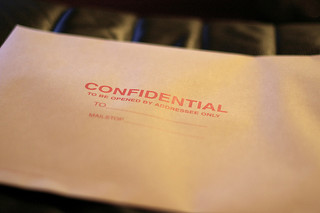
Increased digitization of the legal profession means that lawyers must be aware of the risks of exposing confidential documents to unintended recipients. What can lawyers do to ensure that only the intended recipient receives confidential documents sent via email? Below are four suggestions from Barron Henley of Affinity Consulting, one of LESA’s top-rated presenters at last November’s ‘Law and Practice Update’.
1.) Use Encrypted Email: There is no expectation of privacy with regular email. Therefore, if lawyers want privacy, they should consider using encrypted email. Examples include:
- Mail It Safe (www.mailitsafe.com/index_en.php): gives the user the ability to secure the content, pull back messages inadvertently sent, as well as the ability to track the receipt and consultation of the email and its attachments. There is also an alert system which updates you in real time when your message and/or attachments have been reviewed.
- YouSendIt Pro Plus: there is a fee version and a pay version of YouSendIt. The pay version provides “advanced security options” including return receipts on emails, password encrypted attachments, and creation of expiry dates for attachments.
2.) Use a document management system: a document management system allows you to securely share documents with individuals internal or external to your organization. Examples include: Worldox, Interwoven Worksite and NetDocuments.
3.) Use a subscription based file sharing service: A file sharing service allows one party to create virtual workspaces where documents can be deposited. The creating party can then allow access to the “workspace” to other users who are able to upload/download files, delete/edit files, and/or create folders. The service can also keep track of when each file is updated and which party made the update.
4.) Encrypt the files themselves: Using Word or Adobe Acrobat, files can be encrypted so that they cannot be opened, read, and/or edited without the correct password.
